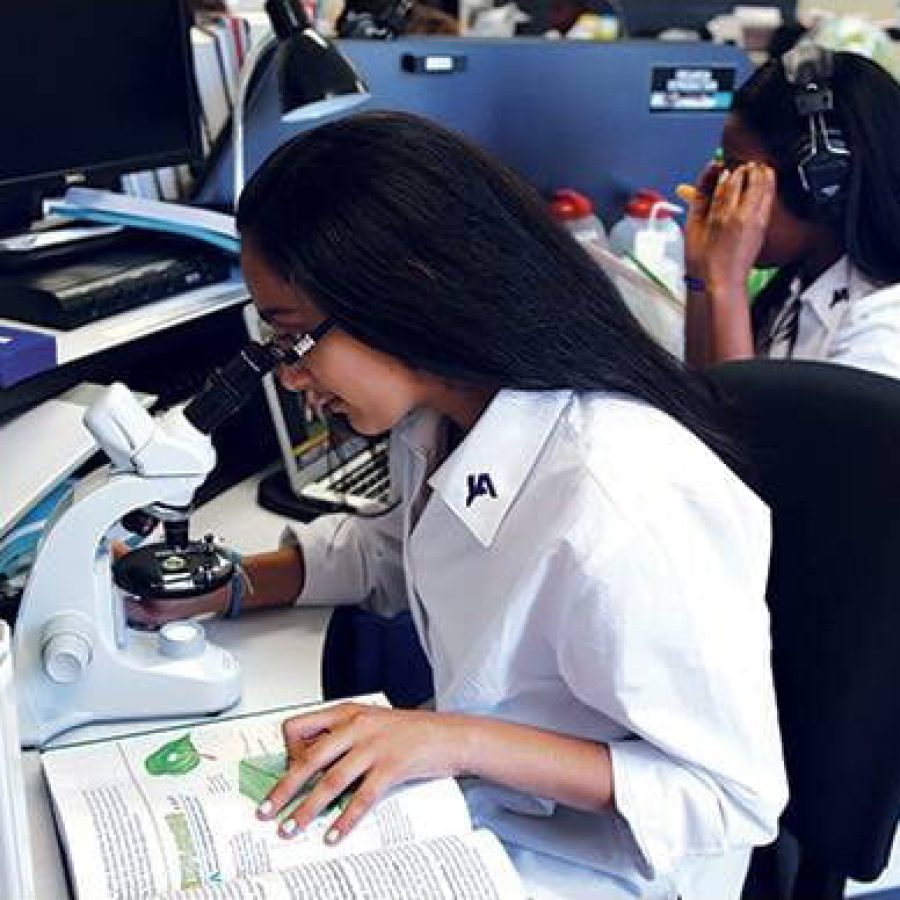By Patti Wade; Director of Marketing and Communications; Jackson Academy
pwade@jacksonacademy.org
JACKSON, Mississippi – How does wind work? What does skin do to protect us? What is an “intelligent home”? Students in second through eighth grades at Jackson Academy are not only asking these types of questions, they are answering them in tangible ways through experiences in three STEM labs installed by Pitsco Education last summer.
The labs, coupled with a supporting, robust curriculum, expose students to science, math, and other subjects, such as robotics engineering, in ways that are fun and engaging. STEM education helps build the life skills necessary for success in the 21st century.
“Exploration in STEM curriculum enables students to make sense of the math and science they previously had learned in isolation. In STEM, the subjects are brought together, often through the use of technology, in hands-on, real-world applications that show students how and why things work,” said Pat Taylor, headmaster. “STEM is a course where the proverbial lightbulb comes on in the minds of most students.”
In STEM labs, students experience subjects by “doing,” which increases understanding and retention of core academic concepts. “We are seeing a great deal of excitement as students get to touch the instruments and models used in STEM labs,” said Matt Morgan, Middle School dean. “Students’ cognition and sensory skills are engaged through the STEM experience, enabling students to connect core content knowledge with tactile experience and learn collaboration and critical thinking along the way.” The kinesthetic experiences ignite the interest of students, helping them connect concepts to real-world applications.
READY FOR TAKEOFF
In the STEM Missions lab, second- through fourth-grade students work in teams of four, following a NASA crew model on topics such as space, electricity, skyscrapers, rocks, and rockets. Serving as commander, materials specialist, information specialist, or communication specialist, students develop skills of communication and collaboration while observing how their contributions affect the results of the entire team.
“It really has been a huge hit with the kids, and I’m having a blast as well!” said Cliff Powers, Lower School STEM instructor and 21st-century learning specialist. “The STEM lab is incredibly stimulating, interactive, and engaging.”
YES, IT IS ROCKET SCIENCE
Understanding rocket science is the focus of one of the hands-on workstations in the Middle School STEM lab. Fifth-grade students make use of 12 workstations that illuminate subjects through explorations on aquaculture, climate and biomes, and even garbology. Sixth-grade students experience 12 workstations that include heart fitness, carbon footprint, and plastics and polymers. Seventh- and eighth-grade curriculum includes microbiology, applied physics, and robotics engineering.
“By implementing Pitsco Education’s STEM programs that have been used in more than 5,000 labs across the country, Jackson Academy is positioning itself as a leader in STEM education in the state of Mississippi,” said Peter Jernberg, president.
IMMERSION AND SELF-DIRECTED LEARNING
“The Pitsco Education STEM labs are unlike any other classroom on campus. First of all, the level of activity, interaction, and cooperative learning is at an all-time high,” said Katie Chustz, seventh-grade science teacher. “Students work in small groups to share knowledge and ideas as they problem solve and conduct experiments to learn how the academic concepts they’ve been taught in math and science classrooms apply in the real world. The projects are so engaging and meaningful that students often don’t realize they are learning.”
When a question arises beyond students’ capabilities, the teacher guides students to the next step. “STEM education definitely requires teachers to change the way they deliver subject content,” says Barbara Neely, science department chair and a leader in developing STEM education at JA. “No longer can a teacher be ‘a sage upon a stage’ and depend on students to learn solely from lectures. STEM teachers are facilitators. They help students learn by guiding and questioning. Much of the responsibility for learning is placed on the student. Not only must STEM teachers be knowledgeable in the science and math content, they must also be confident in the use of technology and the engineering processes.”
In the end, it all comes back to preparing students for their future. “The STEM labs and robotics curriculum are designed to ignite and stimulate the intellectual curiosity and creativity possessed by all children. By encouraging and promoting student engagement and autonomy over their own learning, the STEM experience helps students become lifelong learners, a promise of our mission statement,” concludes Cliff Kling, JA president elect.
That’s definitely an outcome that students will appreciate in years to come.
Source: pitsco.com


